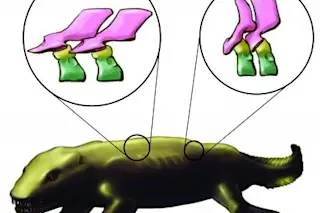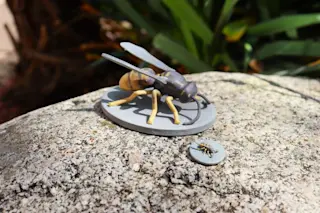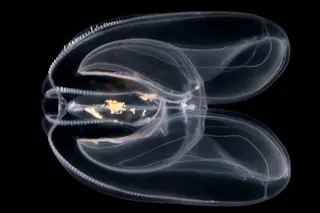Illustrated version of an Ichthyostega tetrapod, zooming in on the correct orientation of two vetrebrae reconstructed in the study. Credit: Julia Molnar. When the earliest animals hauled themselves out of the ocean and evolved legs, they began flopping and eventually walking down the evolutionary path toward terrestrial life as we know it. The fossil remains of these first four-legged creatures, called tetrapods, have played a crucial role in understanding this sea-to-land transition. The spine is of particular interest, but it turns out that paleontologists had it backward. Tetrapod fossils have long proven difficult to study since the bones often can't be separated from the petrified material that surrounds them. Using a new modeling method, researchers bombarded these 360-million-year-old fossils with high-energy X-rays in order to make 3-D models of the ancient remains. The new method, reported in Nature this week, allowed researchers to isolate the otherwise-hidden bones and see them ...
Paleontologists Use 3-D Models to Rewrite Evolution
Discover how a new tetrapod fossils study reveals the spine's true orientation, reshaping our understanding of vertebrate evolution.
More on Discover
Stay Curious
SubscribeTo The Magazine
Save up to 40% off the cover price when you subscribe to Discover magazine.
Subscribe













